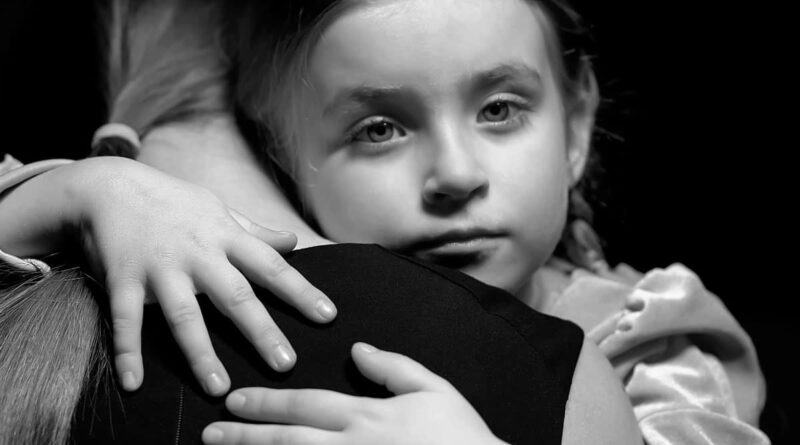How Many Hugs Do You Need a Day Between Parents and Children
Hugs enhance a child’s physical growth. They trigger the release of oxytocin, the same hormone that the mother releases during labor to bond with her baby. Increased levels of this hormone stimulate growth of cells, tissues, and neurons. The absence of nurturing touch suppresses cell response to growth hormones. In addition, hugs reduce a child’s heart rate, which helps prevent temper tantrums.
Oxytocin released during hugs increases trust
Hugs have numerous benefits. They reduce stress, boost a child’s pain threshold, and promote positive feelings. Furthermore, hugs increase trust, decrease the incidence of depression, and lower blood pressure. These benefits of hugging a child are just a few of the many benefits of cuddling. To learn more about how hugs benefit children, read on! But first, learn about the benefits of cuddling.
Unlike other emotions, hugs have a calming effect on infants and toddlers. The hormone oxytocin reduces blood pressure and the stress hormone norepinephrine in humans. Research has also suggested that hugs promote better romantic relationships and improve cardiovascular regulation. And, touching a child can also prevent a child from being defiant and stubborn.
Hugging releases oxytocin, the same hormone released during meditation. This hormone increases the sense of security and trust, and is as relaxing as meditative practices. Hugging helps a child’s self-esteem. And it balances out a child’s cortisol levels, reducing anxiety. If a child doesn’t receive many hugs, he or she may experience anxiety or depression. If a child doesn’t have a lot of hugs from family and friends, they may struggle later in life.
Another benefit of hugging is that it increases levels of oxytocin, the hormone associated with safety and trust. It also promotes the release of growth hormones. This boosts the child’s physical development at a young age, boosting the child’s trust and developing relationships with others. However, there is a catch with hugs. They can cause children to be overly tolerant of discomfort.
Increases bond with child
Despite what you may have heard, hugging your child does more than increase your connection. It builds resilience and reduces the negative effects of conflict. Physical contact with parents helps children develop healthy coping mechanisms, which in turn improves their resilience in the face of adversity. Here are four ways to boost your child’s emotional health:
A hug stimulates the release of the hormone oxytocin, which promotes physical growth. It also triggers the release of other hormones, which encourage growth in your child’s neurons and cells. Hugging also helps your child feel better and sooths their nervous system. During a hug, your child’s brain produces more oxytocin, also known as the love hormone. Oxytocin has numerous physiological effects, including stimulating growth.
The benefits of hugging are numerous. Children feel happier and more secure with their parents. Hugs also increase their level of trust, a critical component of human relationships. Studies have shown that hugging improves your child’s emotional health, and it can even increase their pain threshold. This is the reason why hugs should be a part of everyday parenting. Be sure to remember that hugging is not an uninhibited form of affection, but should always be accompanied by some form of restraint.
The physiological effects of hugging are also well-known. Studies have shown that hugs help children calm down during meltdowns and tantrums. A firm embrace reduces cortisol levels in the brain, slowing the child’s physiological responses when he is emotionally upset. In addition, researchers have noted that hugging can also boost a child’s self-esteem, which in turn helps them develop and become healthy.
Reduces heart rate
A recent study looked at infants’ heart rate responses during hugs. The researchers say the results provide evidence that hugs play an important role in early bonding. However, the results were not universal. In addition to reducing the infant’s heart rate, hugs also increased the infant’s RRI, a measure of sympathetic nervous system activity. Infants who were less than a year old did not exhibit an increased RRI.
Hugs can have many health benefits. Studies show that they can help combat infections, reduce fatigue, and reduce depression. Children who receive physical affection from parents and caregivers have higher oxytocin levels, which can lower blood pressure and reduce the risk of heart disease. Moreover, children who are given hugs from a loved one are less likely to develop stress and anxiety in later years. And, what’s better, giving hugs to children is fun, as the child feels relaxed and happy.
Babies’ emotional state is often heightened by stress, so it’s important to offer them a hug to calm them down. Hugging a child can do just that. It can activate the calming branch of the brain and reduce the child’s heart rate. The benefits of hugging children go beyond providing comfort. Researchers have found that 70% of human communication is nonverbal, which means that we can interpret a child’s mood and expression through a single gesture. According to Judith Kestenberg, a psychoanalyst specializing in child development, hugging can reduce the infant’s heart rate and lower its rate.
A recent study found that children who receive hugs often have lower heart rates than children who are not able to hug their caregivers. The children who were not hugged also showed higher oxytocin levels, which are related to lower stress and cardiovascular responses. Although these results are not conclusive, the findings are promising. Hugs may be a helpful way to boost a child’s self-esteem and build a strong emotional bond with their caregivers.
Helps stop temper tantrums
There are several ways to respond to a child’s temper tantrum. First, make sure your child is safe. Acknowledge his or her feelings, preferably in a low voice, and remain with them until they calm down. Avoid trying to reason with your child; instead, remain firm about your refusal to give in to their demands. If you see a tantrum coming on, take your child to a quiet area where he or she can calm down.
Another way to defuse a child’s tantrum is to distract him or her. This may mean using a toy or a distracting activity. When your child starts to yell, calmly respond by saying, “It’s okay.” When the child stops screaming, turn the conversation around. Tell him or her that you’ll talk to him or her later, when he or she is calm. Using a steady voice will keep your child from yelling or crying.
If you’re worried about your child throwing a tantrum, visit a pediatrician. If your child holds his or her breath, it’s possible that they are suffering from a health problem that makes the tantrum more intense. A physician can rule out more serious health issues that may contribute to the tantrums. Among these are vision or hearing problems, chronic illnesses, and language delays. You should also check your child’s developmental age to rule out any underlying health issues.
It’s important to remember that children mimic their parents. If you show frustration or anger, your child will likely copy your behavior. Try to follow a regular schedule and avoid delaying meals or naps. Children can learn to express their feelings better if they are given choices. Moreover, giving your child a sense of control will prevent your child from throwing a temper tantrum. You can also make your child feel that he is in control of his behavior by giving him a choice between doing what you want him to do and what he can choose.
Builds resilience
Studies show that hugs and positive interactions with family members boost the resilience of children. Children who experience trauma and recover from it are known to be resilient. Hugs help children overcome traumatic experiences and can help them to cope better with everyday life challenges. Hugs also help children develop empathy. They can make a child feel more comfortable in unfamiliar surroundings, which builds their self-esteem. Moreover, hugs and positive interactions with family members are important for children’s development.
The most basic requirement for resilient kids is to be in a relationship with a protective, nurturing adult. A supportive relationship helps the brain develop the way it should and help a child learn coping mechanisms. Without supportive relationships, a child’s brain senses threat and responds by activating a stressful response. Without this type of relationship, children are less able to learn new skills and deal with challenging situations. Likewise, resilient children have healthy and supportive relationships with peers.
In addition to a positive connection with a caregiver, hugs are known to reduce stress. This is because they help a child connect with the person hugging him or her. The hug also helps a child develop an attachment with their caregiver, which is crucial for their healthy development. In addition, hugs help children deal with conflict situations. For instance, a child exposed to conflict may respond more positively to hugging than a child who is exposed to a stressful environment.
HUGS/Abrazos is a program that provides behavioral health support and targeted patient navigation to pregnant and parenting women in communities that are affected by the COVID-19 pandemic. HUGS/Abrazos combines patient navigation with immediate behavioral health support in a way that builds pathways to long-term support. And the benefits of this approach are well-recognized. In addition to supporting the well-being of the children, Hugs/Abrazos foster better parenting habits for a healthier, happier, and more resilient society.



